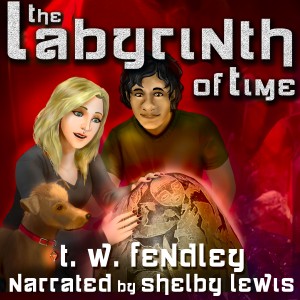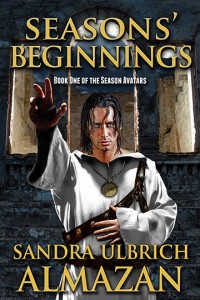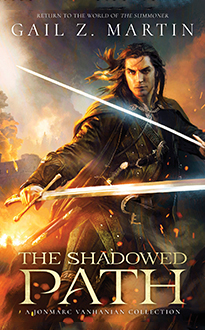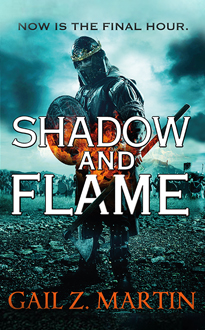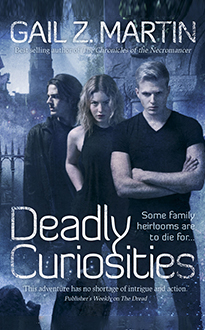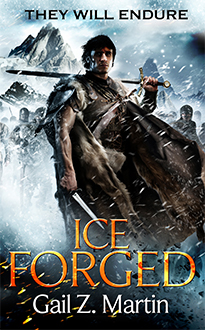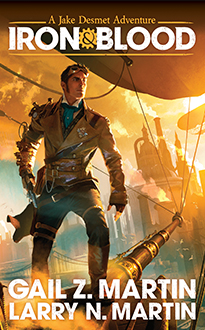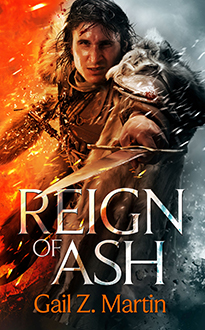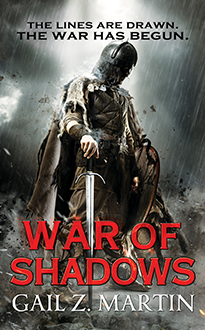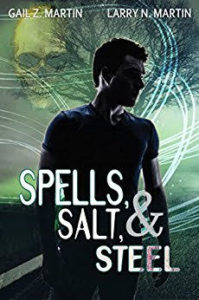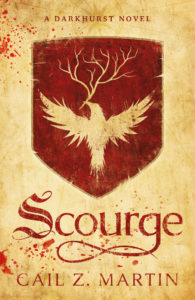By Gail Z. Martin
Not too long ago, short fiction terrified me. I didn’t flinch at a contract requiring 175,000 words, but 8000 – 10,000? Horrors! Then a friend invited me to be in her anthology, and I said yes—with trepidation. Turns out I enjoyed writing the story, which was required to have both pirates and magic in it.
That started the ball rolling. Since then, I’ve said yes to fifteen anthologies, and I’ve started to write two series of direct-to-ebook short story series, with a new story every month on Kindle, Kobo and Nook. One of the anthologies that included a short story of mine, “Magic: Esoteric and Arcane” went on to win a British Fantasy Society award for Best Anthology and be nominated for a Nebula award for Best Anthology. And from those anthologies have come other invitations to participate in new anthologies, plus a contract for my “Deadly Curiosities” novel/series, which expands on the characters and world I created in “Magic”.
Some folks love writing short stories and don’t worry about novels, in the same way some authors only write long fiction. I’ll also admit that I take a little different approach to short stories, since mine tend to be stories in a series with continuing characters, somewhat like a serialized novel. That’s very different from the friends of mine who have sold hundreds of stand-alone short stories to magazines. I’ve also heard it said that “Novelists are failed short-story authors and short-story authors are failed novelists.” While I get the humor in that concept, I think it does an injustice to most authors.
In my opinion, a short story is more difficult to write than a novel because you’ve only got about twenty or so pages to fully convey plot, character and setting with enough skill to emotionally engage your reader and spin a memorable tale. There’s a lot more wiggle room in a novel, more set-up time, more space to expand and flesh out. While writing a novel poses its own challenges, short stories aren’t “easier” just because they’re short.
For authors, short fiction offers several benefits. Anthologies are a “sampler platter” where readers who might not take a chance on a full novel from an unknown author can take your writing out for a low-risk test drive to decide if they want to go further. Depending on the anthology, short stories can also provide a nice advance check—from hundreds to thousands of dollars. Being in an anthology can put an author in esteemed company, a nice boost for a new author to be among more established peers. And as in my own experience, a successful short story can spawn a new novel or series. Not only that, but short stories allow an author room to experiment with concepts and characters that may not warrant a whole novel, but are interesting to explore. They permit an author to grow and stretch.
The two series of short stories I publish direct to Kindle, Kobo and Nook gives me the ability to keep a narrative going in two worlds that weaves around and in-between my books. My Jonmarc Vahanian Adventures series explores the background of a popular character from my Chronicles of the Necromancer books, essentially building a prequel one story at a time. Likewise, my Deadly Curiosities Adventures are tied in to my new “Deadly Curiosities” urban fantasy Plus, writing to the theme of an anthology is just plain fun, forcing me outside my normal comfort zone.
For readers, short stories have that “sampler platter” benefit in reverse, providing access to bite-sized fiction by authors you might have heard about but not tried yet. It’s a great way to discover a new author without committing to an entire book. Themed anthologies can be lots of fun as you see authors create stories with unique variations on the central concept. And as many readers tell me, short stories are nice to read on a commute because they don’t leave you hanging mid-chapter until the end of the work day!
There seems to be some debate on whether or not anthologies are good for publishers. Magazines of short fiction have certainly seen a tough market, with many long-established publications going out of business, moving completely online, decreasing the number of issues per year or raising prices to make up for a diminished readership. Editorial cut-backs at the big publishers have left editors with less time to take on anthology projects, and budget constraints have made the big publishers wary of projects that don’t have slam-dunk potential.
On the other hand, many small presses embrace anthologies and seem to do quite well with them (based on the fact that they keep bringing out more and more anthologies). Anthologies do well on Kickstarter, since the publisher has perhaps thirty collaborating authors to promote the campaign instead of just one. Many of these anthologies are published without author advances, or with very low advances but the promise of royalties. What the small press can offer is a combination of at-convention sales to a core of engaged fan readers, as well as the flexibility to explore niche themes. An anthology with a winning theme and a few dozen authors may well seem less risky for a small press to produce than a novel with a single author, since a reader who loves the theme and loves most of the anthology writers perceives a success, where the sales of a novel hinge on a single author’s skill.
Despite what you may have heard, I think that short fiction is going strong, and will be around for quite a while. So the next time you feel like snacking on a story instead of a full sit-down meal of fiction, grab a short story and dig in!

